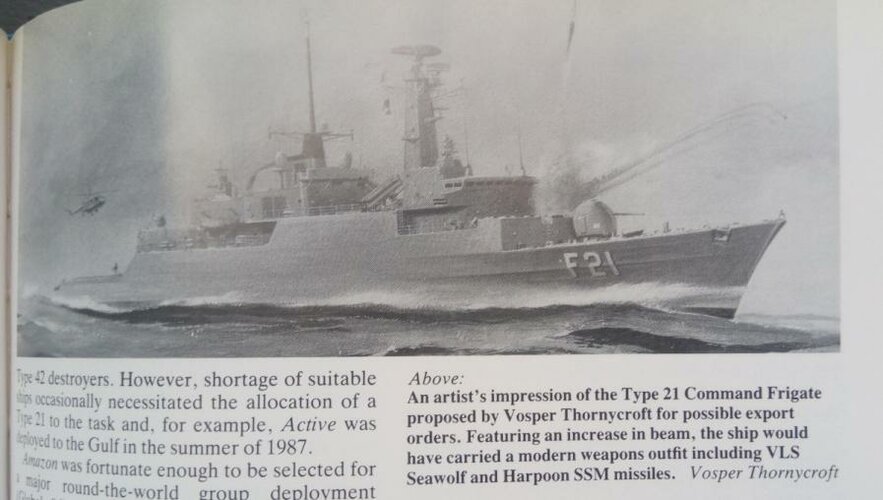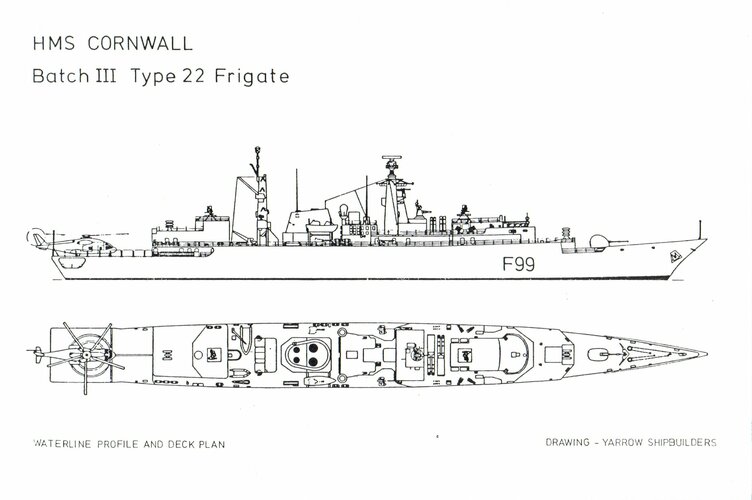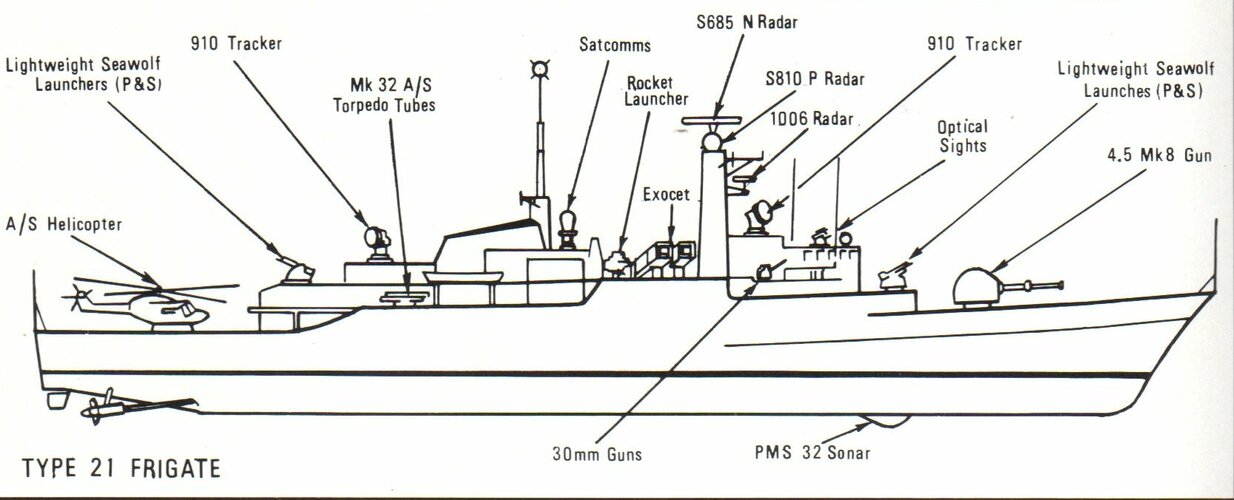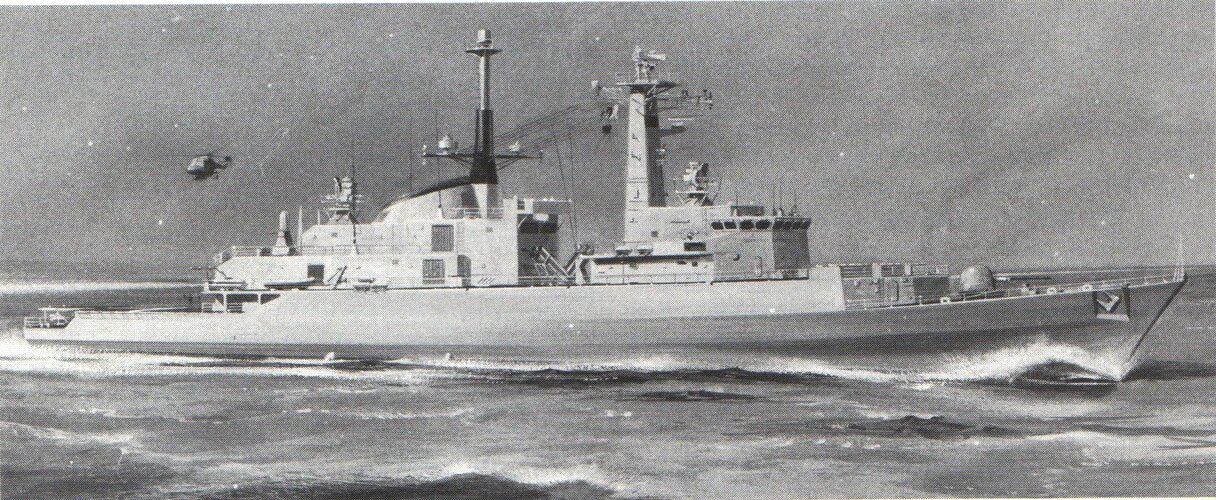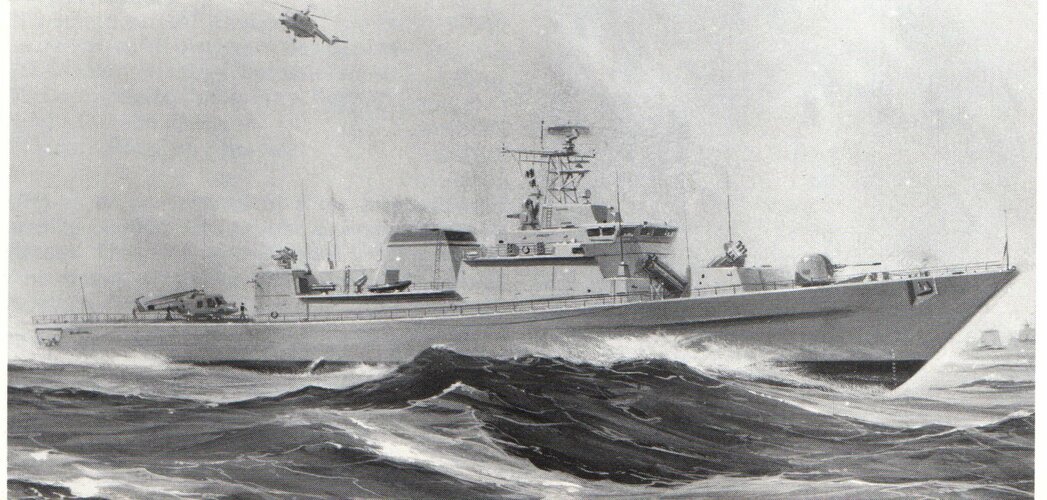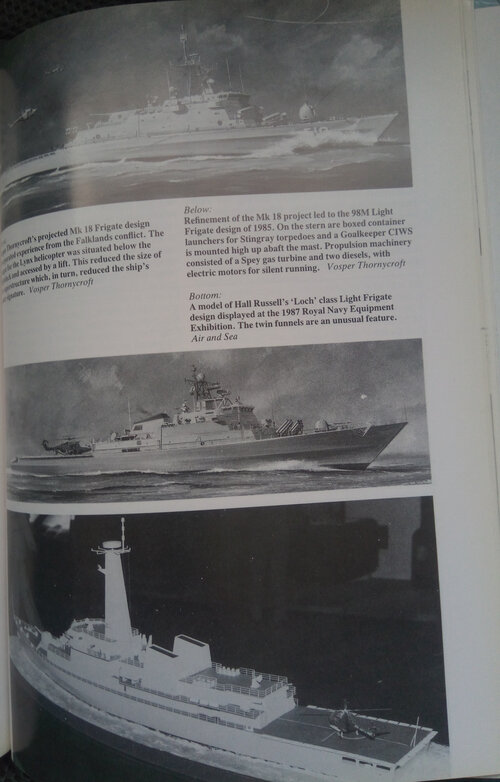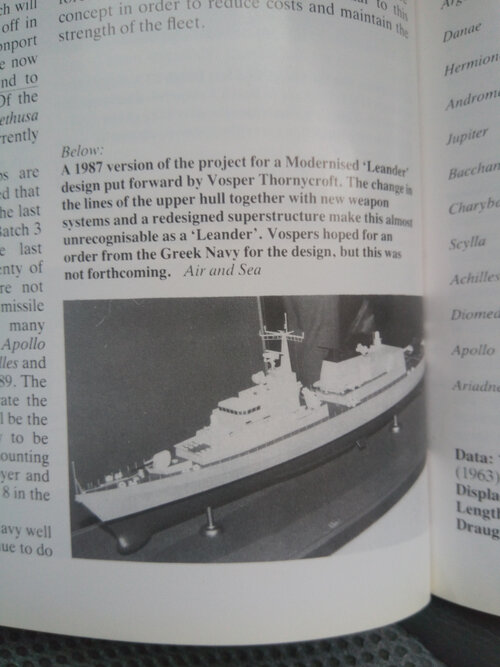Commercial Frigate Development
Not surprisingly, commercial frigate design has also kept pace with the advances in technology and tactics. Disappointed but not deterred by the lack of orders for the Seawolf Type 21 design, Vosper Thornycroft (VT) carried on with the concept of using the Type 21 as the basis for development.
VT's operational and marketing studies identified the worldwide need for two types of frigate. Firstly, what they called a Command Frigate, able to co-ordinate fleet and amphibious operations, and yet fully capable of operating alone against any thread; secondly, they saw a need for a smaller, cheaper General Purpose Frigate. This would be capable of deep-sea operations, and able to accept a wide variety of weapons fits that could easily be changed. Both of these designs came directly from Type 21.
The Command Frigate could easily be mistaken fro the Amazon class in design, though not in capability. Using updated sensors and computers, it can have eight surface-to-surface missiles, the Phalanx Close In Weapons System (CIWS) forward and aft, and the vertical-launched Seawolf. The Type 21's COGOG propulsion system in available, or alternatively CODOG - the use of diesel or gas. The increased beam allows the superstructure to be of steel; extra accommodation includes the accommodation for an Admiral and 13 staff officers.
The VT General Purpose Light Frigate, designated Type 18, is a more radical departure in ship design. Although 9m shorter, its hull form is a derivative of the Type 21 form. It is, however, relatively longer, with a 12% smaller volumetric coefficient to improve further the sea keeping and hydrodynamic performance.
It is interesting to note that VT claims that the increase in relative length allows a reduction in the size of the superstructure, thus giving a long, low profile which in turn produces the advantage of a reduced radar-reflective area, reduced windage and a more effective weapons layout.
A low radar profile is extremely important, in that it makes the ship more difficult to detect, and increases the effectiveness of the ship's electronic countermeasures systems. The shape of the hull and superstructure affect the radar-reflective pattern, and VT have introduced a below0deck hangar for the Lynx helicopter.
In order to give maximum flexibility to the customer, weapons and sensors for the Type 18 have not been specified; however, they include a Mk 8 4.5in gun, eight SSM, a SAM and CIWS system, the Lynx helicopter, and STWS. The upper deck layout allows the weapons to be sited in prime positions offering the widest arcs of fire. This is an impressive fit for a ship of this size. It is also designed to have a particularly small compliment of 119 officers and men, an important feature for most navies. Propulsion is by three diesel engines which can give 30kt, but if a higher speed is required CODAG could be incorporated. The forward-looking nature of the Type 18 design, using the sea-keeping and ship performance of the Type 21, should give it an important position in the inventory of frigate design.

